Foggy photos can be moody and emotional, but can also seem bland at times. However, add some color and fog takes on a whole new persona.
Painted Fog Everglades National Park
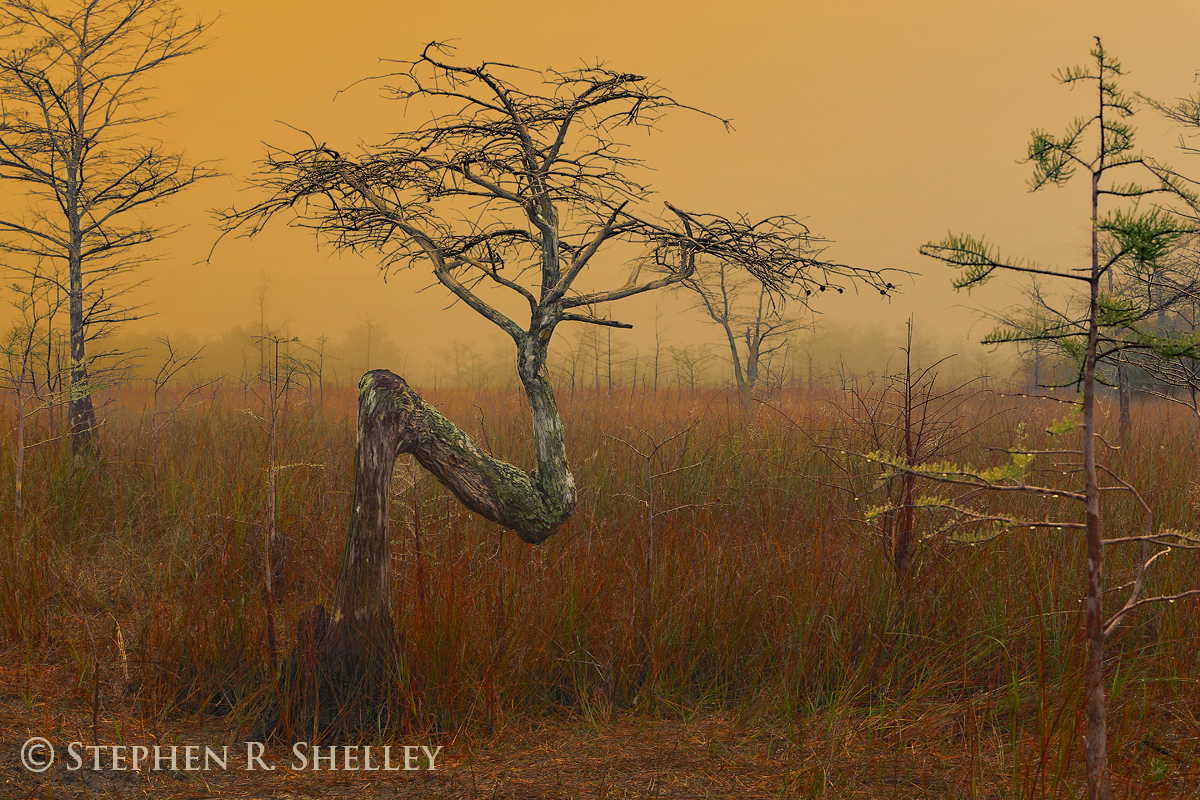
Follow Me On My Photography Adventures

Foggy photos can be moody and emotional, but can also seem bland at times. However, add some color and fog takes on a whole new persona.
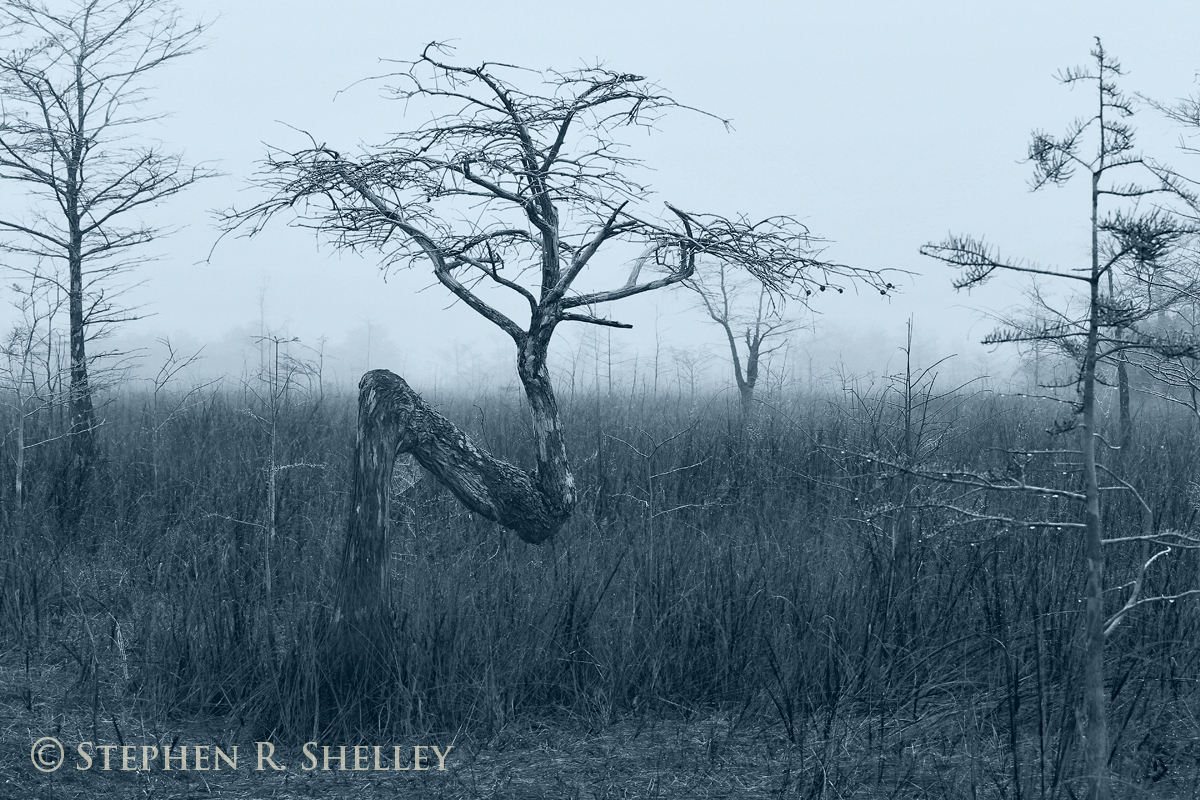
Photographing fog has been on my list of things to do for quite some time. Being that fog is unpredictable and happens early in the mornings, I have been procrastinating on setting my alarm. However, yesterday I saw that there was a dense fog advisory and high probability for fog so I decided to get up early and make a trip out to Everglades National Park.
The fog cooperated and was fairly heavy. The sun was scheduled to rise around 6:50 AM but did not make an appearance until after 9 as a result of the fog. I did not have a real plan on how to shoot the fog so I experimented as I went. I captured a few decent shots and learned a lot for my next photo trip.
I found that fog is best captured with a long lens that compresses the scene and more accurately reflects the scene. Unless you are in white out conditions, fog is more noticeable in the distance than right around you. This is more accurately captured and/or accentuated with a long lens versus a wide angle lens.
I still need to find the best subject matter to compliment the fog. I tried pine trees and cypress trees yesterday. Next trip I will work with some of the lakes and/or boardwalks.
Another lesson learned was that color photos and fog tend to be bland. I found that if I converted them to black and white they had more emotion.
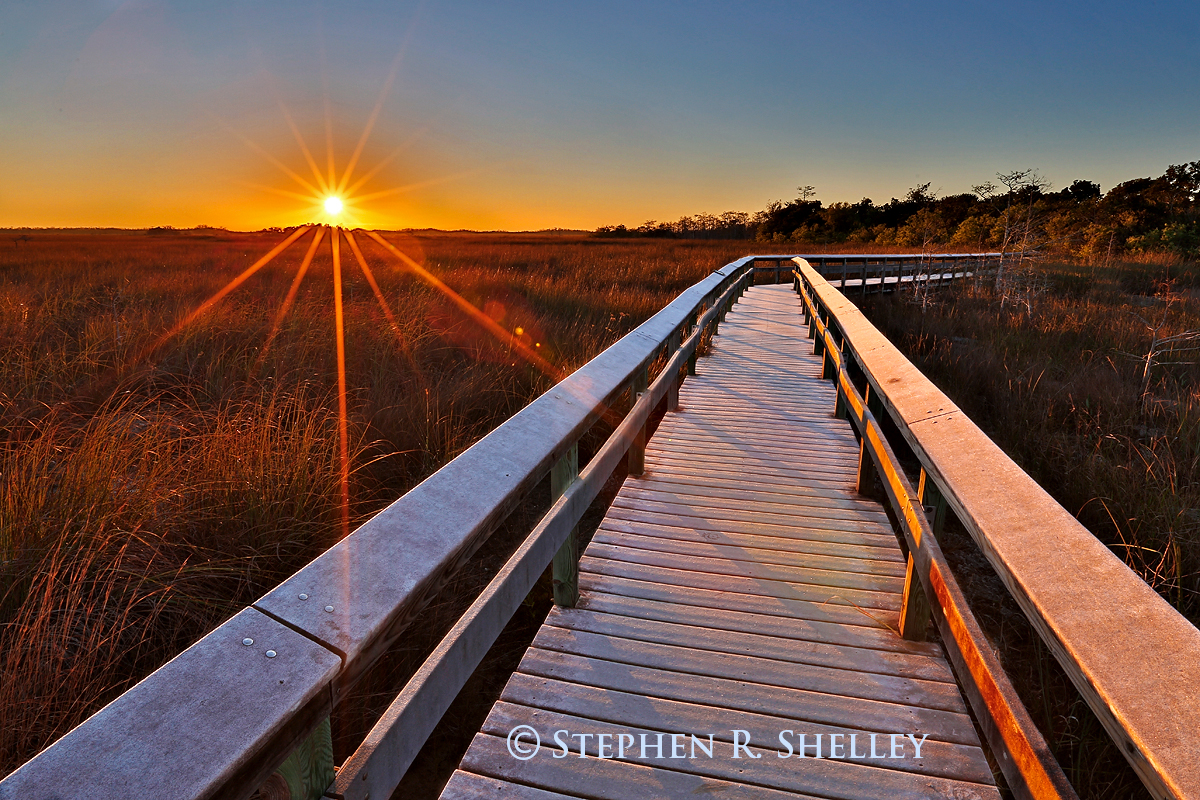
While looking at the weather forecast yesterday afternoon I came up with an idea for what could be a unique photograph. Yesterdays forecast called for the coldest weather South Florida has seen in more than 4 years. The lows in the interior were thought to dip to the mid 20’s to low 30’s and a freeze warning was issued by NOAA. I envisioned trying to capture an image in the everglades with white frost within the landscape. A unique image that would be hard to repeat unless you had the right conditions. I called a friend of mine, Robert Chaplin, and asked if he was interested in tagging along with me. He said yes, so we headed out this morning at 5:30 AM to see what we could create.
Unfortunately for us, but good for the local farmers, the temperatures were running some 4 degrees higher than forecast and the wind speeds also stayed higher than forecast limiting the formation of frost. I had hoped to have widespread white frost on the ground to set my scene but now I would have to find something else. We ended up at the Pahayokee Overlook Boardwalk. Man made objects, especially those raised off of the ground tend to freeze/frost faster than living plant matter. Luckily for me the Payhayokee Boardwalk was iced over when we got there from top to bottom.
I set up my shot to use the Boardwalk as my leading line and main subject matter since I was hoping to accentuate the icing. This proved problematic since prior to the sunrise there was no light to reflect off the ice and make it recognizable as ice. I ended up using my flash and flashlight to try and make the ice more visible. I never did end up with exactly what I was hoping for but I still managed to capture an image that is captivating and has visible ice. The only problem is that without the background story one may not realize that the white color is ice and not the normal color of the boardwalk.
Luckily as a bonus I captured a few other good photos both prior to the sun rising and afterward. I even got a visit from one of the local owls. All in all it was a successful trip even if not exactly how I planned it.
On the way out I stopped back by the Cypress Dome with the blooming Everglades Daisy’s to give it one more try. I know there is a good photo in there I just am having a hard time finding a way to capture it with my camera. So far I like this effort the best. I will see if it continues to grow on me.
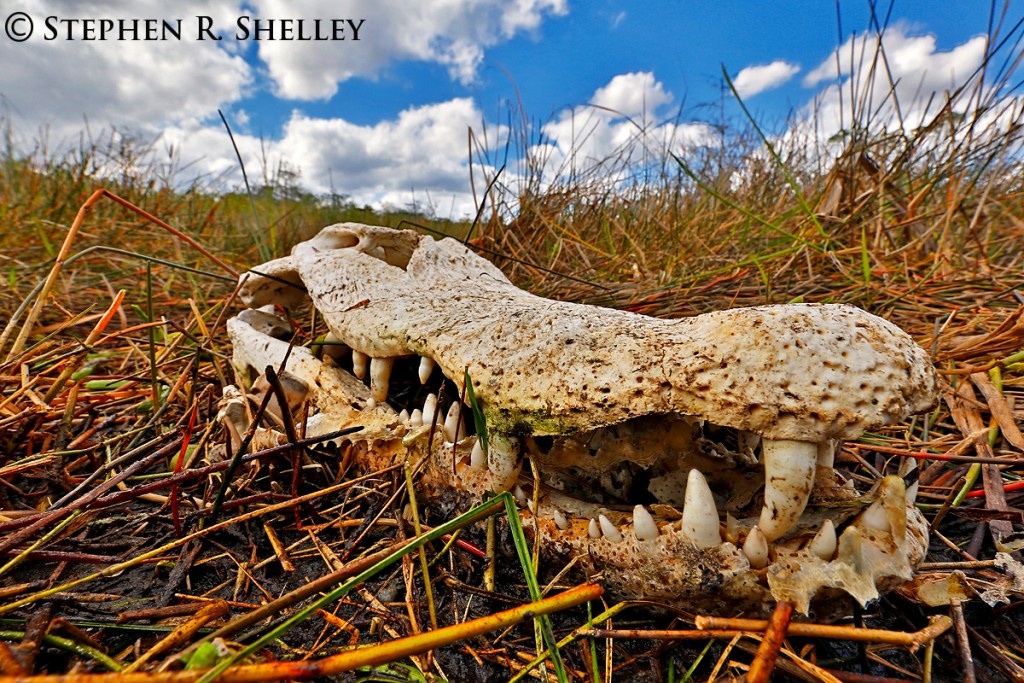
For Presidents Day I decided to take a day trip out to Everglades National Park to explore a few trails and Cypress Domes I have not been to in a while. The weather was great, not to hot, and there were little to any bugs to speak of.
I started my journey in a well known Cypress Dome called Double Dome. Most of the dome was dry except for the deep hole in the middle and few deeper spots here and there. However, dry is relative when talking about Cypress Domes. During the wet season Cypress Domes typically are full of water, anywhere from shin deep to waist deep. Therefore, dry means no standing water. However, there was plenty of squishy mud. Between the wet season and the complete dry season is a time period where the ground is mushy and soft. This was one of those times. Some of the Bromeliads were in bloom and the resident large gator was there guarding his watering hole and female. I saw a few Water Moccasins but none wanted to be photographed. There were also a good number of birds flying around and feeding in the few water holes remaining, including a couple of Great Blue Herons.
My next stop was a smaller less well know Cypress Dome that was full of blooming yellow flowers. I tried to capture the scene but found it to be pretty difficult. The scene was just to busy with all of the flowers, cypress trees and branches and then the grass. I am sure that printed very large it would all seem proportional, but shrunk down on a computer screen or at low resolution it is just hard to not be overwhelmed by complexity and overabundance of details.
After photographing the Cypress Dome, I then hiked a few other trails but did not find anything of interest to photograph. I finished the day by hiking a trail I had never been on but had spotted from Google Earth. On the trail I came across an alligator that had died some time ago. All that was left was some bones and the skull. They had all been bleached white by the sun. I took a few photos of it just for fun. It appeared to be a fairly good sized gator when it was alive.
I could envision capturing some good photos from this new trail given the right conditions. I will definitely hike it again.
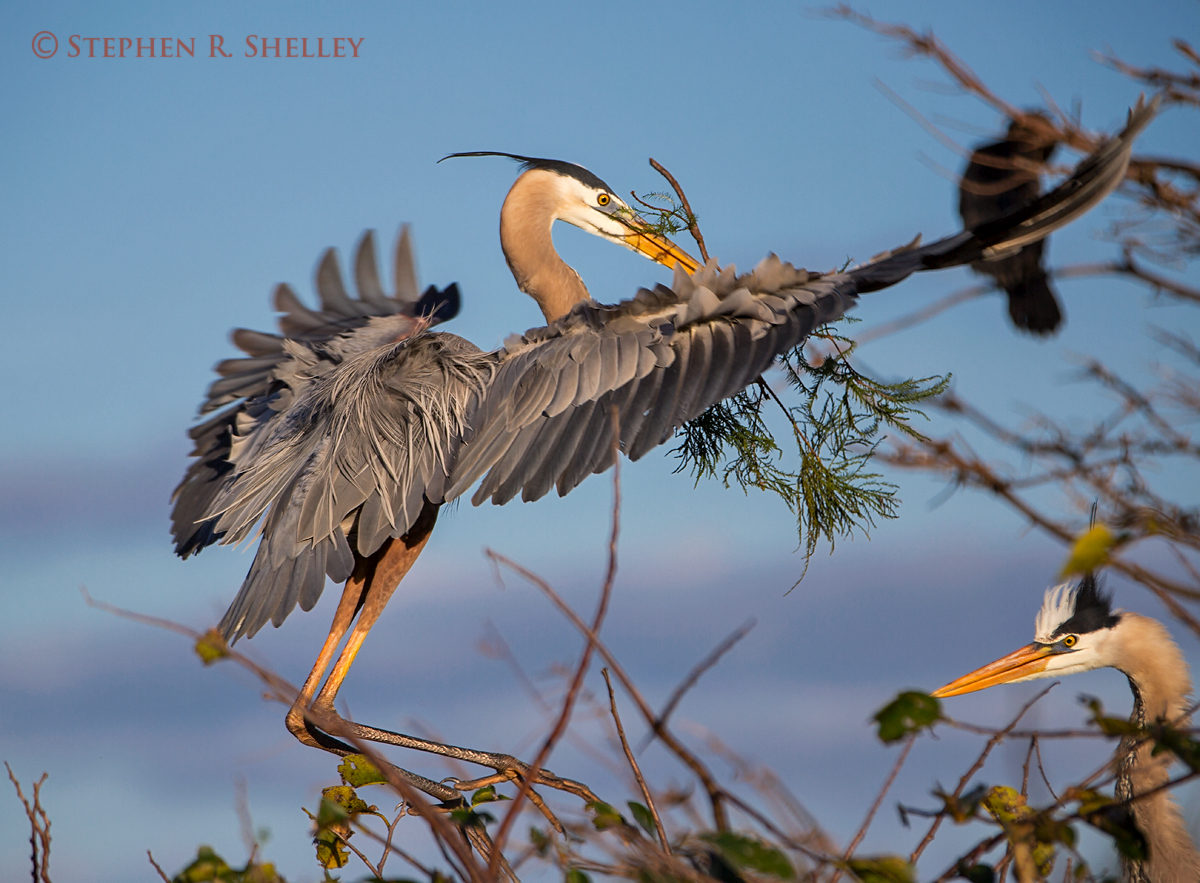
A few weeks ago I tagged along with fellow photographer, Robert Chaplin, who was scouting for an upcoming bird workshop. One of our stops was the Wakodahatchee Wetlands in Palm Beach County. The last time I was there was about three (3) years ago and I remembered it being full of nesting birds. When I returned this time it was just as I remembered it if not better. There were more than 10 nesting pairs of Great Blue Herons as well as numerous nesting anhingas and cormorants. The best part is that many of the nests are only a mere 10 to 15 feet from the elevated boardwalk making photographing them easy to do without the need to use a long lens.
Last time I visited during the early morning hours, this time I was there in the late afternoon just before sunset. While I was there some of the Great Blue Heron males were bring food to the sitting females as well as nesting materials. I was able to capture one of the males flying back and forth with nesting materials from a nearby tree. It was a lot of fun to watch much less photograph.
The most awe inspiring part about being there near sunset is the number of birds that fly in to roost for the evening. During the last 30 minutes or so before the sunset hundreds of birds of all varieties flew into the wetlands and started roosting in the nearby trees. By the time I left every tree was full of birds roosting for the evening.
Of all the bird locations I have visited Wakodahatchee is by far one of my favorites. It consistently produces a large number and variety of birds that can be easily photographed with any lens or camera. Eco Pond in Everglades National Park at its peak is the only other location that rivals Wakodahatchee in terms of numbers and variety. However, Eco Pond’s peak is only a few weeks out of every year.
For anyone who has not yet visited Wakodahatchee I encourage you to plan a trip. I can assure you it is worth the drive.